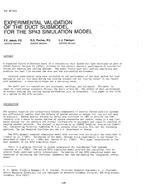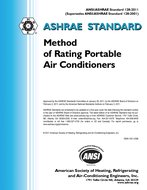A contemporary house located in California has a unique HVAC system featuring radiant floor heating and cooling, forced-air hydronic heating and cooling, and a system that ventilates the house at night to reduce air conditioner energy use by pre-cooling building mass. The purpose of this study was to compare the energy consumption and electrical power demand characteristics of the various heating and cooling operating modes. Cooling season testing involved three different operating modes during similar weather conditions and comparable indoor comfort conditions. Heating testing involved operation in two test modes: hydronic radiant floor heating and hydronic forced-air heating, both by heating water with natural gas. Energy performance results reveal that slab pre-cooling caused some of the energy demand to shift from primarily in the afternoon. Coupling slab pre-cooling with nighttime ventilation air significantly shifted the energy demand load from primarily in the afternoon to late night with the load coming mainly from the fan. Also, during comparable outside conditions, there were appreciable energy differences among cooling modes and no identifiable energy advantage was noticed during the heating mode.
Units: Dual
Citation: Symposium, ASHRAE Transactions, vol. 111, pt. 1, Orlando 2005
Product Details
- Published:
- 2005
- Number of Pages:
- 10
- File Size:
- 1 file , 12 MB
- Product Code(s):
- D-25534


